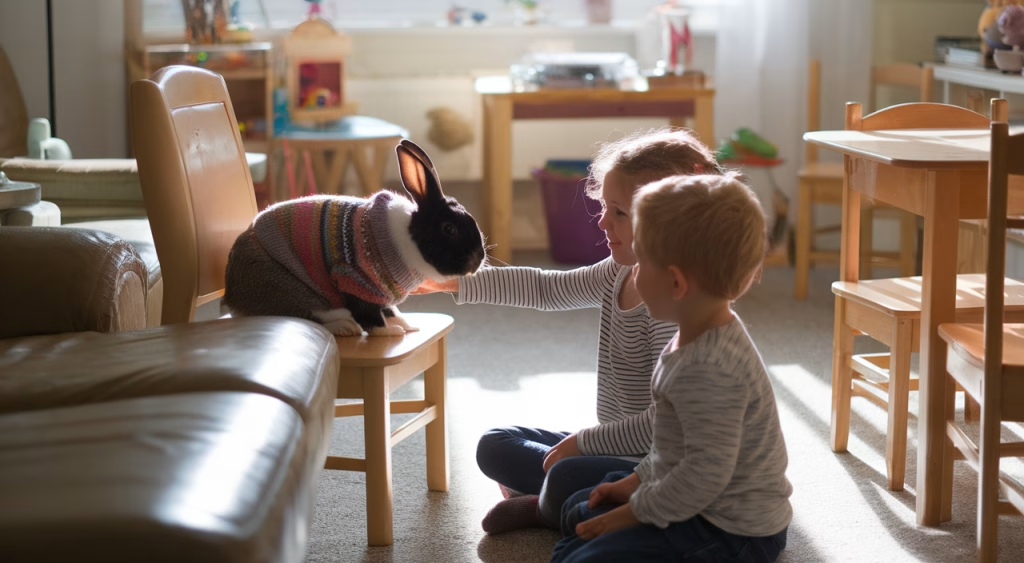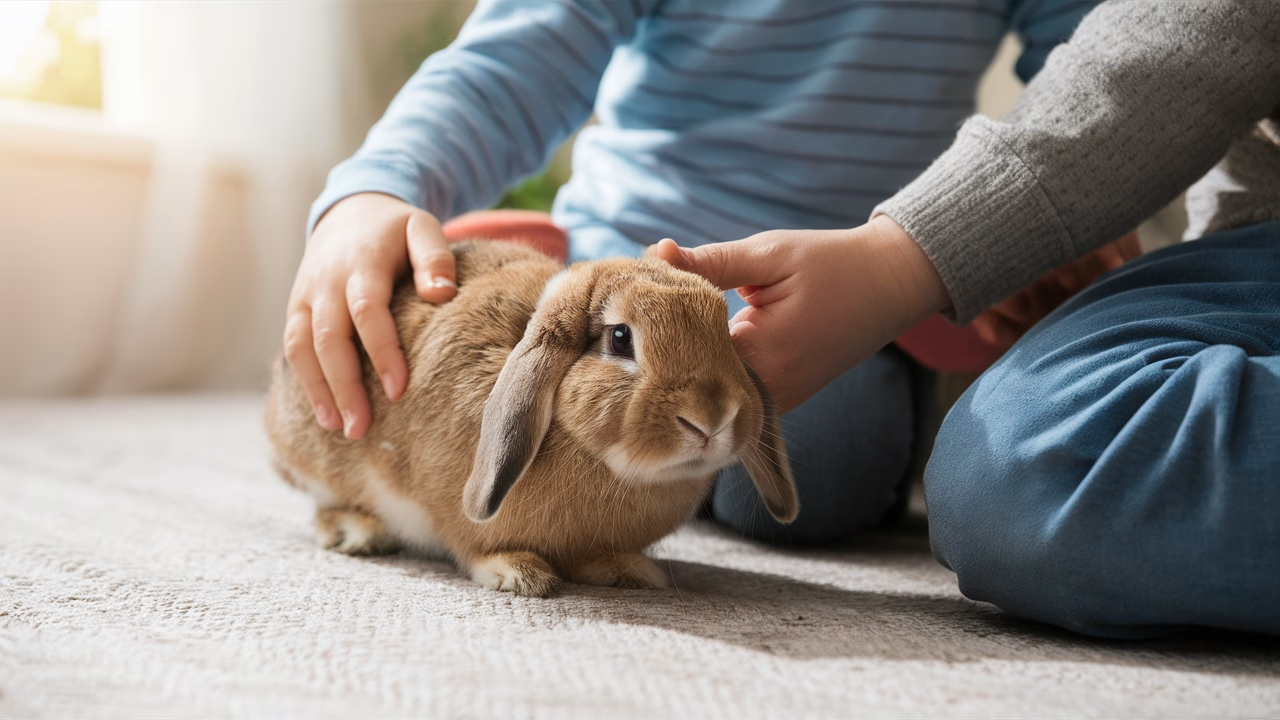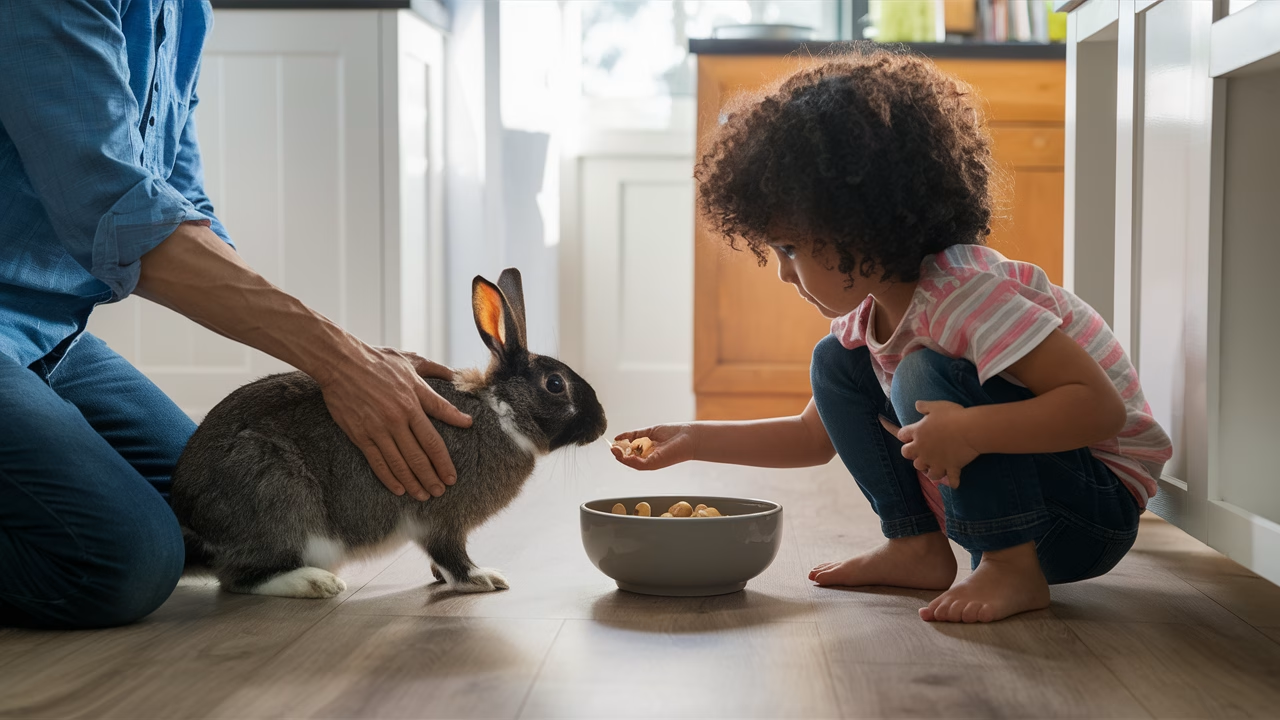Are Rabbits Good Pets for Children? Here’s What Parents Should Know
At first glance, rabbits seem like the perfect companions for kids: soft fur, floppy ears, and the kind of wide-eyed curiosity that children adore. But the truth about rabbits as pets for young families is more nuanced. Are rabbits good pets for children? The short answer: only under the right conditions—with mature kids (typically over 8 to 10 years old), constant adult supervision, and solid education about small animal care.
TL;DR – Quick Facts on Rabbits as Pets for Kids:
- Rabbits are delicate: Their bones are fragile and easily broken by accidental drops or clumsy handling.
- They’re prey animals: Loud, sudden movements stress them out, especially around young children.
- Daily pet rabbit care is mandatory: They require grooming, a special diet, cleaning, and social interaction every day.
- Best for older kids: Children under 8 generally lack the patience and gentleness needed.
- Supervision matters: Even older children need adult help to care responsibly for a rabbit.
- They chew everything: Electrical cords, furniture, and toys aren’t safe unless bunny-proofed.
Understanding Rabbit Care for Children
Why Rabbits May Not Be Ideal for Young Kids
Let’s be honest: bunnies look like living plush toys. But rabbits are not built to be cuddled recklessly. Their delicate skeletal systems make them highly susceptible to injury. Imagine a toddler’s excited hug turning into an accidental squeeze—the result can be a broken spine or leg. Understanding rabbit behavior is crucial: these pets panic easily when not properly supported, sometimes twisting themselves into injury when trying to escape a child’s embrace.
Moreover, young children under eight typically lack the coordination and stillness needed to correctly hold or interact with a rabbit. What seems like an innocent game of chase can trigger a rabbit’s fear response—leading to scratching, biting, or in severe cases, psychological trauma for your pet rabbit.
Essential Rabbit Grooming Tips for Families
You might not expect it, but rabbits as pets require intensive grooming routines. Their coats need gentle brushing several times a week, especially during shedding season. If grooming is skipped, your pet rabbit could suffer from painful hair matting, ingest shed fur, or develop skin conditions. Their nails grow quickly too, needing monthly trimming to avoid infections or posture issues.
Unfortunately, most children lack the patience and finger dexterity required for safe rabbit grooming. Even brushing must be done gently and calmly, or the rabbit may become frightened. That’s why teaching these rabbit grooming tips must be gradual—with adult assistance and plenty of positive reinforcement for your child-friendly pet routine.
Managing Stress in Rabbits Around Children
Unlike dogs and cats, rabbits are prey animals by nature. Their instincts tell them to flee from big, noisy, fast-moving creatures—like… well, toddlers. High-stress environments can lead to physical symptoms like digestive trouble, over-grooming, or extreme skittishness. In homes with young children who aren’t yet capable of quiet, calm handling, this stress is constant and impacts your small animal care success.
Scared rabbits resort to classic defense moves: biting, scratching, or thumping. Some may quietly retreat into depression or stop eating altogether. Recognizing signs of stress in rabbit behavior—wide eyes, flattened ears, freezing, or sudden lunges—is a skill most small children don’t possess yet.
Child-Safe Environments for Pet Rabbits
Even before your child meets the bunny, proper housing should be your focus in small animal care. Pet rabbits need room to move, chew-safe zones, and a quiet, low-stress environment. Leaving a rabbit in your child’s bedroom might sound convenient—but it’s not safe or healthy for the rabbit. Curious teeth will gnaw on electrical cords, toys, carpet, furniture—anything within reach. All these objects can cause deadly internal injuries.
Rabbit-proofing involves setting up a secure pen or hutch, covering cords, providing chew-safe toys, and having hiding spots readily available. Your role as the parent includes daily environment inspections and keeping your child accountable for cleanliness and safety in your pet rabbit care routine.
Ensuring Proper Diet and Healthcare for Rabbits
Think carrots are all a bunny needs? Think again. Pet rabbit care involves more dietary complexity than many realize. Their digestive systems are delicately balanced—you’ll need to provide unlimited hay, fresh leafy greens, limited pellets, and very small amounts of fruit as occasional treats. Feeding too many sugary snacks or starchy veggies can lead to diarrhea, obesity, or dangerous GI stasis.
Small children, understandably, want to spoil their pets—but rabbits as pets can’t process kindness in fruit form. Regular vet checkups and prompt attention to behavior changes (like stopped eating or hunched posture) are crucial. Older children can be trained to monitor food, water, and litter box habits—but only with guidance in proper small animal care.
Long-Term Commitment: Rabbits as Lifetime Pets
A rabbit’s average lifespan ranges from 8 to 12 years. That’s a long commitment for a child who may start with enthusiasm and end with forgetfulness. We see it every year—children beg for rabbits as pets, write heartfelt care pledges, but soon their attention returns to video games and school friends. And when pet rabbit care stops, rabbits suffer quietly—often leading to health decline or behavioral issues like biting or digging.
Adopting rabbits as pets means adopting a lifestyle. If your child is old enough—typically 10 or older—and consistently responsible, rabbits can be fantastic child-friendly pets. They form bonds, show affection in subtle ways (like chin rubs), and respond to calm, respectful interaction. But responsibility must be shared between child and adult at all times.
Why Do Kiwi Birds Have Nostrils at the Tip of Their Beak? The Evolutionary Secret Revealed
Comparison Chart: Rabbits vs Other Child-Friendly Pets
| Pet | Best Age Group | Maintenance Level | Interaction Needs | Pros | Cons |
|---|---|---|---|---|---|
| Rabbit | 10+ | High | Moderate | Quiet, soft, bond slowly | Fragile, stress-prone |
| Guinea Pig | 6+ | Medium | High | More tolerant, vocal | Still needs careful handling |
| Fish | 4+ | Low | Low | Soothing, low involvement | No interaction |
| Dog (small breed) | 8+ | High | High | Playful, loving | Training time, energy needs |
Frequently Asked Questions
What age should a child be to handle a rabbit?
Ideally, children should be at least 10 years old to handle a rabbit under parental supervision. Under this age, children often lack the dexterity and understanding needed to interact safely.
Are rabbits good starter pets for kids?
No, rabbits require a high level of daily care, space, and a specific diet. They also stress easily. Guinea pigs or fish may be better starter pets for younger children.
Do rabbits like being held or cuddled?
Most rabbits do not enjoy being held and may panic when lifted. They prefer being petted while on the ground and require calm, gentle interaction to build trust.
How can I teach my child to care for a rabbit?
Start slowly by modeling grooming, feeding, and calm petting. Use storybooks or videos to explain rabbit behavior. Always supervise, and reward gentle, consistent care habits.
Can rabbits live in a child’s room safely?
Only if fully supervised and bunny-proofed. Electric cords, small objects, and flooring can pose health risks. It’s better to set up a rabbit zone in a common area where adults can monitor.
What rabbit breed is best for families?
Larger breeds like the Flemish Giant or Californian are calmer and sturdier, making them a bit more tolerant of handling. Always research temperaments and choose based on lifestyle fit, not looks alone.
How long do rabbits live?
Rabbits live 8–12 years on average, depending on breed and care. Commitment should match a long-term family plan, not a short-term childhood phase.





